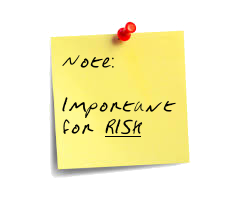 |
||||||||||||||||||||||||||
| About CGF | Our Products | Our Services | Our Patrons | CGF Pledge | CGF Governance Courses | Company Profile News from the CGF Desk | CGF Articles | Events | CSI Activities | PAIA Manual | Contact Us |
||||||||||||||||||||||||||
MEDIA RELEASE
|
||||||||||||||||||||||||||
|
CGF Corporate Patron CGF Honorary Patrons Dr Mathews Phosa (2009-2011) | Prof Shirley Zinn (2009-2011) | Devi Sankaree Govender (2010-2012) | Michael Judin (2011-2013) | Tina Eboka (2011-2013) | Bernard Peter Agulhas (2011-2013) | Wendy Luhabe (2012-2014) | Prof Jonathan Jansen (2012-2014) | Amy Kleinhans-Curd (2013-2015) | Prof Steven Friedman (2014-2016) |
||||||||||||||||||||||||||
| All rights reserved. This message contains privileged and confidential information intended for the use of the addressee named above. If you are not the intended recipient of this message, you must not disseminate copy or take any action in reliance on it. If you have received this message in error, please notify the sender immediately. The sender has taken all possible precautions to safeguard this e-mail as correct. Notwithstanding the above, this does not guarantee that the integrity of this communication has been maintained, nor that the communication is free of errors, viruses, interception or interference. | ||||||||||||||||||||||||||
Uncategorized
TANGIBLE BENEFITS OF A CORPORATE GOVERNANCE FRAMEWORK®
Forward thinking organisations have realised that corporate governance does not merely fall into the portfolio of the Company Secretary. Indeed, the draft King IV Report on Corporate Governance for South Africa 2016 (‘King IV’), describes corporate governance as “the exercise of ethical and effective leadership by the governing body” of an organisation. Why then is corporate governance still viewed by many organisations as a process which increases bureaucracy and drives a ‘tick box’ exercise?
Perhaps the explanation lies in not understanding and appreciating the value which can be unlocked by implementing a purpose-built Corporate Governance Framework® which is tailored to the organisation. Empirical research supports the fact that good corporate governance translates into tangible and sustainable benefits for the organisation
Read more here : 07 June’16 Tangible benefits of a corporate governance framework
BOARDS THAT CREATE VALUE: CORPORATE GOVERNANCE FRAMEWORK®
It has been painful to watch the likes of Lance Armstrong, Mike Tyson and Hansie Cronje sabotage their futures through poor decision-making. Similarly, many organisations and their boards have failed to demonstrate strong and responsible leadership qualities to motivate and drive their organisations to success. Awareness, decisiveness and accountability are some of the business leadership qualities required to achieve remarkable performances.
The ‘buck’ stops with the board of directors and it is the board of directors who are ultimately held accountable for the success of the organisation. However, with the business landscape changing at an accelerating rate, risk management and decisive decision-making are becoming more challenging and business failures more prominent. A recent Harvard Business Review reports the failure rate for mergers and acquisitions to be between 70% and 90%. According to the United States Small Business Administration, only 44% of new businesses are still in existence after four years. Against this backdrop, how does a board create a sustainable organisation in what are clearly turbulent times?
Read More here : 18 January ’17_High performing boards
DO YOU REALLY NEED A CORPORATE GOVERNANCE FRAMEWORK®?
We know that both local and international organisations are continuously having to adapt to operate in uncertain business environments. Locally, the release of the Preferential Procurement Regulations 2017, which places stronger emphasis on ‘radical transformation’, against the backdrop of persisting low economic growth rates are only some of the elements giving rise to further uncertainty. Internationally, the business and regulatory implications of the election of President Donald Trump and the vote in favour of Brexit and how these events will impact on local markets and businesses, is still unfolding. It therefore comes as no surprise that recent governance, risk and compliance (‘GRC’) surveys all indicate an increasing need to improve risk oversight and to balance opportunity management with risk management. The challenge lies in being able to achieve these objectives! ……
Read more here : 28 Feb’17_Do you really need a Corporate Governance Framework
HIGH PERFORMING BOARDS
Board performance, or the lack thereof, has recently been quite prominent in the South African landscape. Unfortunately, the examples of mismanagement, poor oversight and lacklustre governance of our stateowned entities as well as some private sector businesses, abound. Poor and deteriorating financial results, high staff turnovers, lack of strategic direction and transparency as well as little to no stakeholder communication, are but some of the symptoms of a poorly performing board……….
articles 07 June’16 Tangible benefits of a corporate governance framework 15 July’15-Boards that create value 28 Feb’17_Do you really need a Corporate Governance Framework 18 January ’17_High performing boards
Why do good boards fail?
There are many current examples of organisational failures – often with no consequences for the board of directors who are accountable to the organisation and its shareholders. Many of these failures can be attributed to organisations appointing directors with inappropriate skills and no sense of fiduciary responsibility. However, there are circumstances where organisations still fail despite the efforts and good intentions of its board. Why does this happen?
In my opinion, there is too little emphasis being placed on a structured approach to governing the organisation. The roles of the board and management are not clearly defined and as such gaps start occurring in managing the risks facing the organisation.
There needs to be a systematic process or framework in place to address risk management within the organisation. There are so many regulations and compliance challenges facing businesses today, that without such a framework it is very easy to overlook an area of the business which requires attention. A good governance framework embraces much more than just compliance. It also speaks to managing the operational and strategic risks facing the organisation.
This view is shared by the CGF Research Institute (Pty) Ltd who recently developed and published a Corporate Governance Framework® which clearly defines the areas of accountability of the board and differentiates these from those areas for which management will be held responsible. This framework presents the board with a structured approach to pro-actively managing risk within the organisation. It provides the board with a way to map and monitor those aspects of the business which require improved governance structures and processes.
Attached please find an interesting article which elaborates on this subject.
16 April’15-Sustainability depends on strong governance framework
The Ultimate Human Race vs. Strategy Development
When doing a post-mortem of my last Comrades marathon, I was once again reminded of how important strategy is to virtually every task one tackles!
my last Comrades marathon, I was once again reminded of how important strategy is to virtually every task one tackles!
You may be wondering how on earth I can draw parallels between business strategy and running the Comrades Marathon. For those of you who have run this race before, I am sure that my story will sound very familiar.
It starts off by declaring your vision: to run the Comrades Marathon. Bearing in mind that only a few thousand people in the world have completed this race, this is no ordinary goal. You have now set your vision and you tell all your friends and family of the challenge that lies ahead. This piles on the pressure – you just have to make it work!
Despite the fact that I had run this race before, my next reaction was to panic – I am unfit and I need to start training immediately! Luckily, common sense prevailed, and I realised that before I blindly hit the road and start running, I needed to work out a plan. This plan needed to take into account my existing fitness levels and how much time I had left to get fitter. I needed to find out what was new on the running front – what had changed as far as the qualifying races and times were concerned, were there new diets to be considered, did I need to change the shoes I was using? These were only a few of the questions which raced through my mind and needed to be considered. Thankfully, although competitive, the road running community is very supportive and many people are happy to share their advice and experience on training programs and eating plans. And let’s be honest, it is always reassuring to know that others are experiencing the same doubts and challenges that you are facing. However, it was also important to realise when expert advice was needed and to consult with the required professionals when necessary on things such as injuries and training programs – you need to be humble and admit there is always stuff you just don’t know, no matter how experienced you think you may be on the subject.
Setting interim milestones was an important way for me to gauge whether or not I was ready to tackle the race. I also needed to be flexible and adjust the training program when life interfered, and very importantly, I needed to make sure that I did not get sick or injured in the 6 weeks leading up to race day. I wanted to make sure that I got a chance to run even if I had to compromise a bit on the training!
And just when I thought the planning, measuring and monitoring was behind me, I had to work out my plan to tackle Race Day! What pacing chart should I follow? What would I eat along the way? Where would I be meeting my support team? These were just some of the questions that I needed to plan for in order to ensure the best probability of success on race day. Many runners will know, that you don’t try anything new on race day – only tried and tested tactics are to be applied! At this late stage, I took personal advice from Lindsey Parry at the Comrades expo on how to pace myself throughout the race. (He and Brad Brown from Run Talk SA hosted a monthly Comrades webinar in the build up to Comrades which provided some very useful advice and tips for the race).
And so it was that with detailed planning, committed execution, great family support and a bit of luck, that I was able to complete my ninth Comrades Marathon in 10h45.
So at this stage you are probably asking: where are the parallels to business? Let me set it out in a manner which makes it more obvious:
- Establish a vision or future goal to be achieved.
- Assess the external environment in which you are operating and identify the important elements which could possibly impact on your business.
- Analyse the competitive landscape. Know who is doing what and how, and more importantly, who are the potential new entrants to the industry.
- Perform a comprehensive SWOT analysis with emphasis on identifying elements unique to your business.
- Confirm your approach to market and desirable timelines.
- Set milestones (targets or objectives) which can be used to benchmark your performance and confirm the progress being made. Work out the action plans needed to achieve these milestones.
- Identify positions (market share, skills, technology etc.) which need to be defended and outline your defensive actions in this regard.
- Identify the resources required to ensure successful implementation of the action plans.
- Extract and monitor the critical success factors which can jeopardise the entire strategic plan.
- Monitor progress and take corrective action timeously.
Strategy development is stressful and puts a lot of pressure on you, but it is very rewarding when you do achieve your goals. Success motivates you to go out and do more!
Article issued by CGF Research Institute and DQS South Africa
The article issued by CGF and attached below is a stark reminder of a growing risk facing businesses. The absence of appropriate and adequate processes and controls to protect customer information could result in severe reputational damage as well as significant penalties and fines.
It is important for the Board to get clear and accurate feedback on the steps taken by management to protect customer information so that the Board can appreciate the extent of the risk and how this may impact on the future sustainability of the organisation.
17 Feb’14-Obligation to protect customers information
Issues facing Small Business in South Africa today
This was taken from the following URL : http://www.investopedia.com/articles/pf/12/small-business-challenges.asp .
Starting a business is a big achievement for many entrepreneurs, but maintaining one is the larger challenge. There are many standard challenges that face every business whether they are large or small. These include things like hiring the right people, building a brand and so on. However, there are some that are unique to small businesses – ones most largecompanies have grown out of long ago. We’ll look at the 5 biggest challenges in this article.
Client Dependence
If a single client makes up more than half of your income, you are more of an independent contractor than a business owner. Diversifying the client base is vital to growing a business, but it can be difficult – especially when the client in question pays well and on time. For many small businesses, having a client willing to pay on time for a product or service is a godsend.
Unfortunately, this can result in a longer term handicap because, even if you have employees and so on, you may be still acting as a sub-contractor for a larger business. This arrangement allows the client to avoid the risks of adding payroll in an area where the work may dry up at any time. All of that risk is transferred from the company to you and your employees. This can work out fine provided that your main clients have a consistent need for your product or service. However, it is generally better for a business to have a diversified client base to pick up the slack when any single client quits paying.
Having enough cash to cover the bills is a must for any business, but it is also a must for every individual. Whether it is your business or your life, one will likely emerge as a capital drain that puts pressure on the other. In order to head off this problem, small businesses owners must either be heavily capitalized or be able to pick up extra income to shore up cash reserves when needed. This is why many small businesses start out with the founders working a job and building a business simultaneously. While this split focus can make it difficult to grow a business, running out of cash makes growing a business impossible.
Money management becomes even more important when cash is flowing into the business and to the owner. Although handling business accounting and taxes may be within the capabilities of most business owners, professional help is usually a good idea. The complexity of a business’ books go up with each client and employee, so getting an assist on the book keeping can prevent it from becoming a reason not to expand.
Fatigue
The hours, the work and the constant pressure to perform wears on even the most passionate individuals. Many business owners, even successful ones, get stuck working much longer hours than their employees. Moreover, they fear that their business will stall in their absence, so they avoid taking any long breaks away from work to recharge. When fatigue sets in, the weariness with the hours and the results can lead to rash decisions about the business, including the desire to abandon it completely. Finding a pace that keeps the business humming without grinding down the owner is a challenge that comes early (and often) in the evolution of a small business.
Founder Dependence
If you get hit by a car, is your business still producing income the next day? A business that can’t operate without its founder is a business with a deadline. Many businesses suffer from founder dependence, and this dependence is often caused by the founder being unable to let go of certain decisions and responsibilities as the business grows. Meeting this challenge is easy in theory – a business owner merely has to give over more control to their employees or partners. In practice, however, this is a big stumbling block for founders because it usually involves compromising (at least initially) on the quality of work being done until the person doing the work learns the ropes.
Balancing Quality and Growth
Even when a business is not founder dependent, there comes a time when the issues from growth seems to match or even outweigh the benefits. Whether a service or a product, at some point a business must sacrifice in order to scale – this may mean not being able to personally manage every client relationship or not inspecting every widget.
Unfortunately, it is usually that level of personal engagement and that attention to detail that makes a business semi-successful. Therefore, many small business owners often find themselves tied to these habits to the detriment of the company’s growth. There is a large middle ground between shoddy work and an unhealthy obsession with quality, so it is up to the business owner to navigate the company’s processes towards a compromise that allows scale without hurting the brand.
The Bottom Line
These are challenges, but not death sentences. One of the worst things a would-be-business owner can do is to go into a small business without considering the challenges ahead. We’ve looked at some things that can help make these challenges easier, but there is no avoiding them. An important step in overcoming a challenge is knowing the size of that challenge. Besides, a competitive drive is often one of the reasons people start their own business and every challenge represents another opportunity to compete.
